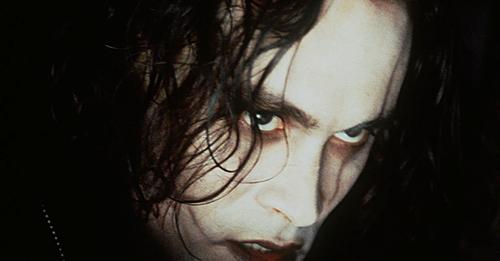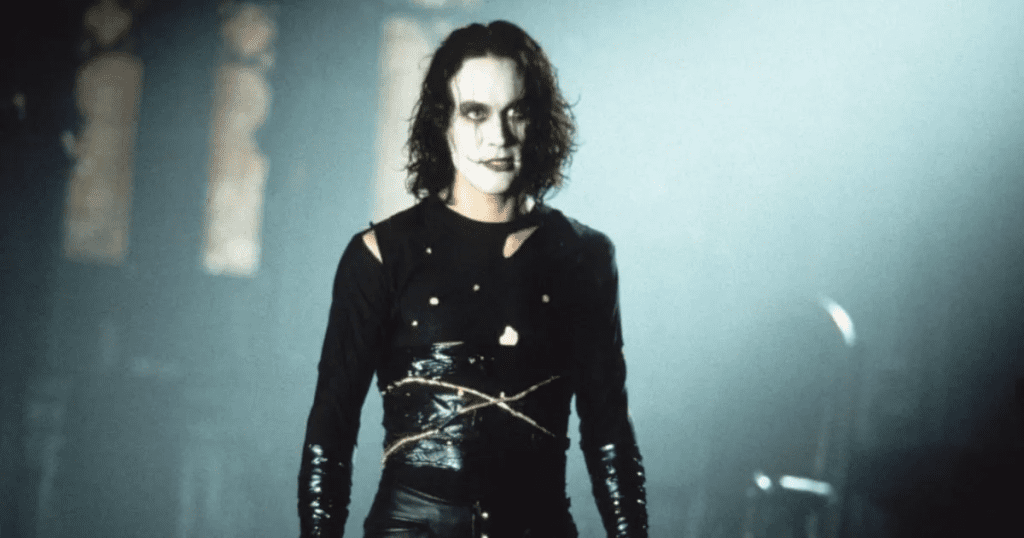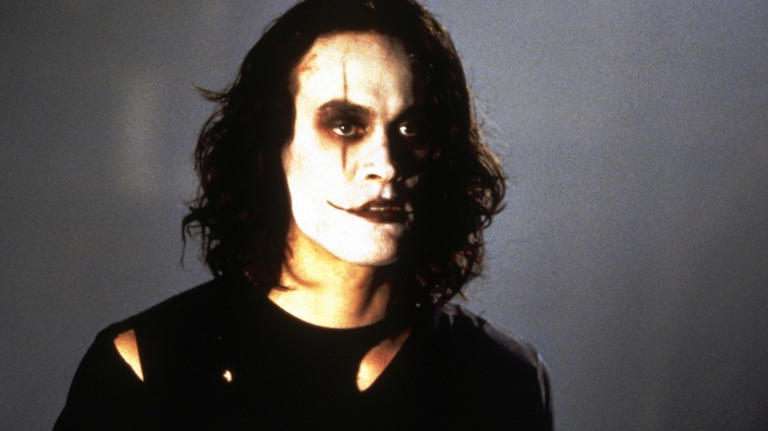In 1994, “The Crow” soared onto the big screen, captivating audiences with its dark, gothic tale of love and revenge. The film, based on James O’Barr’s comic, was meant to be a breakout role for Brandon Lee, the son of legendary martial artist Bruce Lee. However, the movie is equally remembered for the tragic death of its lead actor. As a new remake of “The Crow” is set to hit theaters, it’s time to revisit the original film, the tragedy that occurred on its set, and the lasting impact Brandon Lee’s final performance has had on cinema.

Brandon Lee was just 8 years old when his father, Bruce Lee, died of brain swelling. Despite the shadow cast by his father’s legacy, Brandon was determined to make his own mark in Hollywood. By the early 1990s, he had already started to carve out a niche for himself, but it was his role in The Crow that was poised to be his big break.
The Crow follows the story of Eric Draven, a rock star who is brutally murdered alongside his fiancée, only to be resurrected to seek vengeance on those responsible. The character’s dark, brooding nature and the film’s gothic atmosphere perfectly showcased Lee’s talents, and his performance was hailed as both haunting and powerful. However, what was meant to be a stepping stone to stardom instead became the final chapter in Lee’s life.
On March 31, 1993, tragedy struck on the set of The Crow. During the filming of a scene where Eric Draven is shot by a gang member, a prop gun malfunctioned, firing a fragment of a dummy bullet that had been lodged in the barrel. The fragment struck Lee in the abdomen, causing severe internal injuries. Despite hours of surgery, Lee was pronounced dead at New Hanover Regional Medical Center.
The accident was the result of a series of oversights and negligence on the part of the production team. The .44 Magnum used in the scene had been loaded with blanks by a crew member who had removed the gunpowder from live bullets but left the primer intact. This primer fired the dummy bullet fragment with the force of a live round. The incident sparked a lawsuit from Lee’s mother, Linda Lee Cadwell, who sued the film’s producers and other involved parties for negligence. The suit was later settled out of court.
Despite the tragedy, the filmmakers were determined to complete The Crow as a tribute to Lee. Stunt performer Chad Stahelski, a close friend of Lee’s, was brought in to help finish the movie. Using special effects, body doubles, and creative editing, the filmmakers managed to complete the film without Lee’s presence in some scenes. The finished product was a testament to both Lee’s talent and the dedication of the cast and crew.

When The Crow was released in 1994, it was met with critical acclaim. Roger Ebert praised the film, noting that it was “more of a screen achievement than any of the films of his father.” The movie’s dark, atmospheric style, combined with Lee’s tragic death, contributed to its status as a cult classic. Over the years, The Crow has continued to resonate with audiences, both as a gothic revenge tale and as a poignant reminder of Lee’s untimely demise.
With the upcoming remake of The Crow, directed by Rupert Sanders and starring Bill Skarsgård, there has been a renewed focus on the original film’s legacy. Sanders has emphasized the importance of safety on set, particularly in light of the tragedy that befell Lee. He made it a point to ensure that no live-firing weapons would be used during the filming of the remake.

Sanders insisted on using airsoft guns, which look like real firearms but use compressed air to fire, instead of live-firing weapons. This decision was made to avoid any risks associated with blanks or live ammunition on set. Sanders explained, “One of the things that I was very strict about from Day 1 with the armorer was no live-firing weapons. Everything we shot with was done digitally, and I don’t think it changes the dynamic of how you view them in the movie.”
The advances in digital effects have allowed filmmakers to create realistic action scenes without the need for dangerous on-set conditions. This change in approach reflects the lessons learned from past tragedies, including the one that took Brandon Lee’s life. By prioritizing safety, the industry hopes to prevent similar accidents from occurring in the future.

Brandon Lee’s death on the set of The Crow was a heartbreaking loss for both his family and the film industry. However, his legacy lives on through his work and the impact he had on those who knew him. Lee’s performance in The Crow remains a powerful testament to his talent, and the film’s success has ensured that his memory endures.
Lee’s tragic death also served as a wake-up call for the industry, leading to improved safety protocols and a greater emphasis on preventing on-set accidents. The changes implemented since then have made film sets safer, ensuring that no other actor has to suffer the same fate.
Brandon Lee’s final role in The Crow is both a celebration of his talent and a sobering reminder of the dangers that can arise during filmmaking. As the remake of The Crow takes flight, it’s important to remember the lessons learned from the original film’s tragic history. Lee’s legacy continues to inspire actors, filmmakers, and audiences alike, reminding us all of the importance of safety, authenticity, and the enduring power of cinema.


